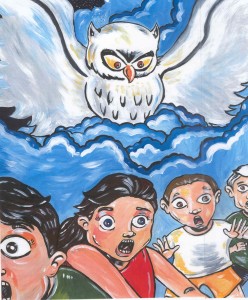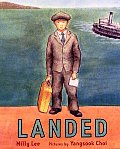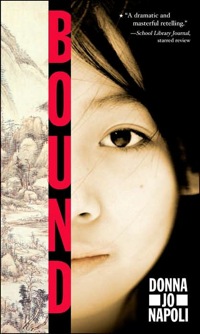by Janine M. Schall, University of Texas-Pan American, Edinburg, TX
 This is the third of a four part interview with author and illustrator Xavier Garza, 2005 América’s Award Honor Book winner. This interview was conducted electronically by Janine Schall.
This is the third of a four part interview with author and illustrator Xavier Garza, 2005 América’s Award Honor Book winner. This interview was conducted electronically by Janine Schall.
Janine: All of your picture books are English/Spanish bilingual. What made you decide to write bilingual books?
Xavier: I am a firm believer in the advantages that come from being able to speak more that one language. While I agree that everyone should learn English, I see no reason to give up the tongue of your ancestors. I disagree with those who spout an English only point of view. I find it silly that they would seek to portray an individual’s ability to be bilingual as being something bad. They forget that America isn’t composed of just one culture; she is a varied and diverse nation that is made up of many, many different tongues, traditions and ideas. She is forever changing, never staying constant for too long.
Janine: It’s lovely to hear such a strong defense of bilingualism — even here in the Valley I sometimes hear teachers denigrating Spanish. I imagine that growing up in Rio Grande City it would be difficult not to be bilingual, but was that something that your family and/or schools supported? I noticed that you don’t do your own translations for your books. Why is that?
Continue reading



 This is the first of a four part interview with Xavier Garza, author of several children’s books, including Lucha Libre: The Man in the Silver Mask, 2005 América’s Award Honor Book. Xavier was born and raised in Rio Grande City, a small town on the Texas/Mexico border. His work draws upon the cultural and linguistic influences of life in the Rio Grande Valley. Xavier now lives in San Antonio with his wife and son. This interview was conducted electronically.
This is the first of a four part interview with Xavier Garza, author of several children’s books, including Lucha Libre: The Man in the Silver Mask, 2005 América’s Award Honor Book. Xavier was born and raised in Rio Grande City, a small town on the Texas/Mexico border. His work draws upon the cultural and linguistic influences of life in the Rio Grande Valley. Xavier now lives in San Antonio with his wife and son. This interview was conducted electronically. Milly Lee (2006) introduces readers to Sun Lee, a 12-year old Chinese boy, who immigrates to America in the book
Milly Lee (2006) introduces readers to Sun Lee, a 12-year old Chinese boy, who immigrates to America in the book  Last week I wrote about the challenge of evaluating fairy tales for cultural authenticity and the tools that help meet that challenge. In this post I explore the question: should there be zero tolerance for cultural inaccuracies in fairy tales? I’ll by describing the process of evaluating a novel-length version of Cinderella set in China.
Last week I wrote about the challenge of evaluating fairy tales for cultural authenticity and the tools that help meet that challenge. In this post I explore the question: should there be zero tolerance for cultural inaccuracies in fairy tales? I’ll by describing the process of evaluating a novel-length version of Cinderella set in China. Evaluating fairy tales can be a challenge especially if the setting is another culture or country. Serving on the Children’s Literature Assembly for the National Council of Teachers of English
Evaluating fairy tales can be a challenge especially if the setting is another culture or country. Serving on the Children’s Literature Assembly for the National Council of Teachers of English